Which sewing machine should you buy? It helps to know what each kind of sewing machine does.
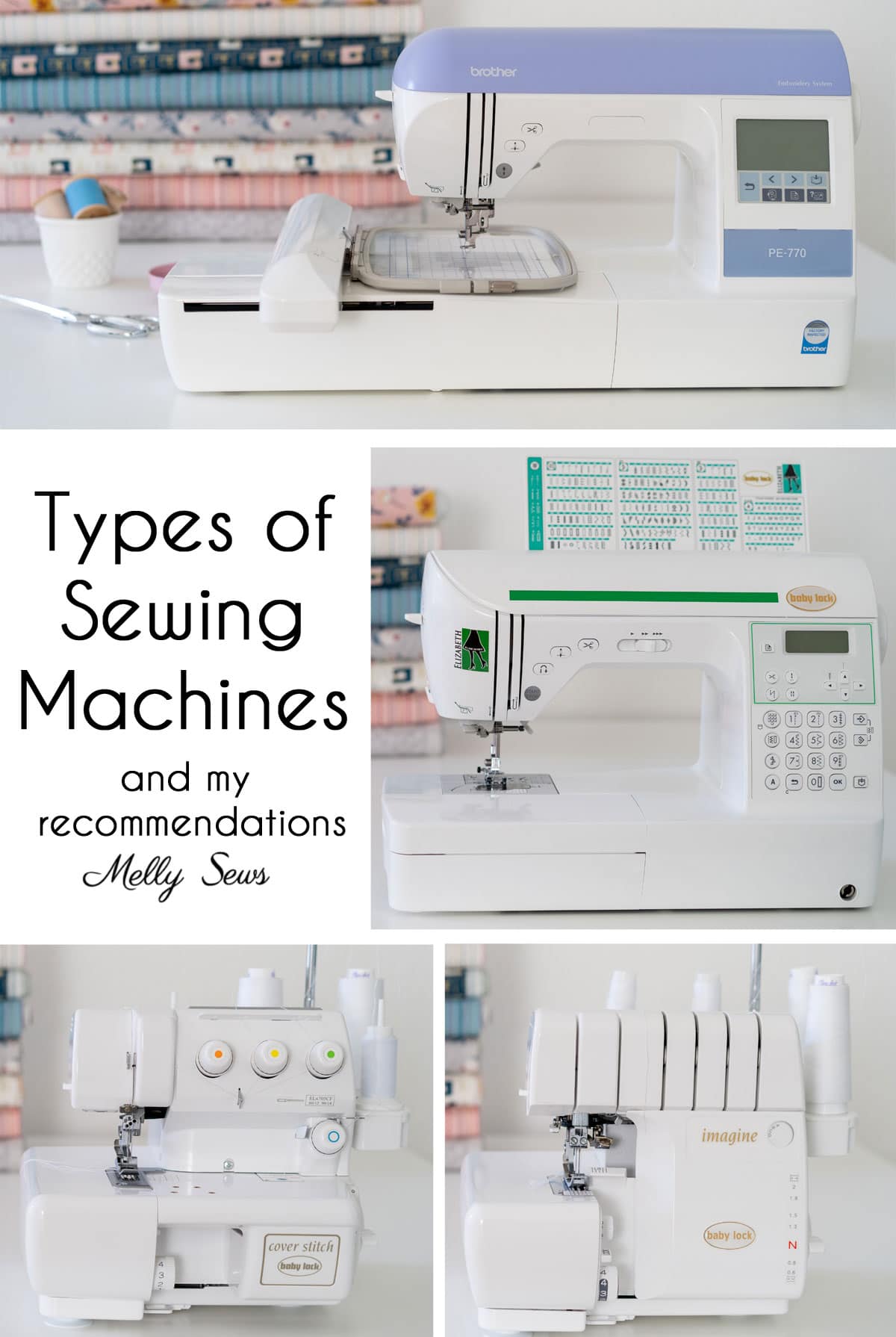
Hey y’all, this is the time of year that I always start getting questions in my email about the best sewing machine to buy. They come from both beginners looking for their first sewing machine and more seasoned sewing people who want to add a new serger or cover stitch or embroidery machine. So today I’m going to explain (and show!) what each of those machines does and give you my list of sewing machine reviews.
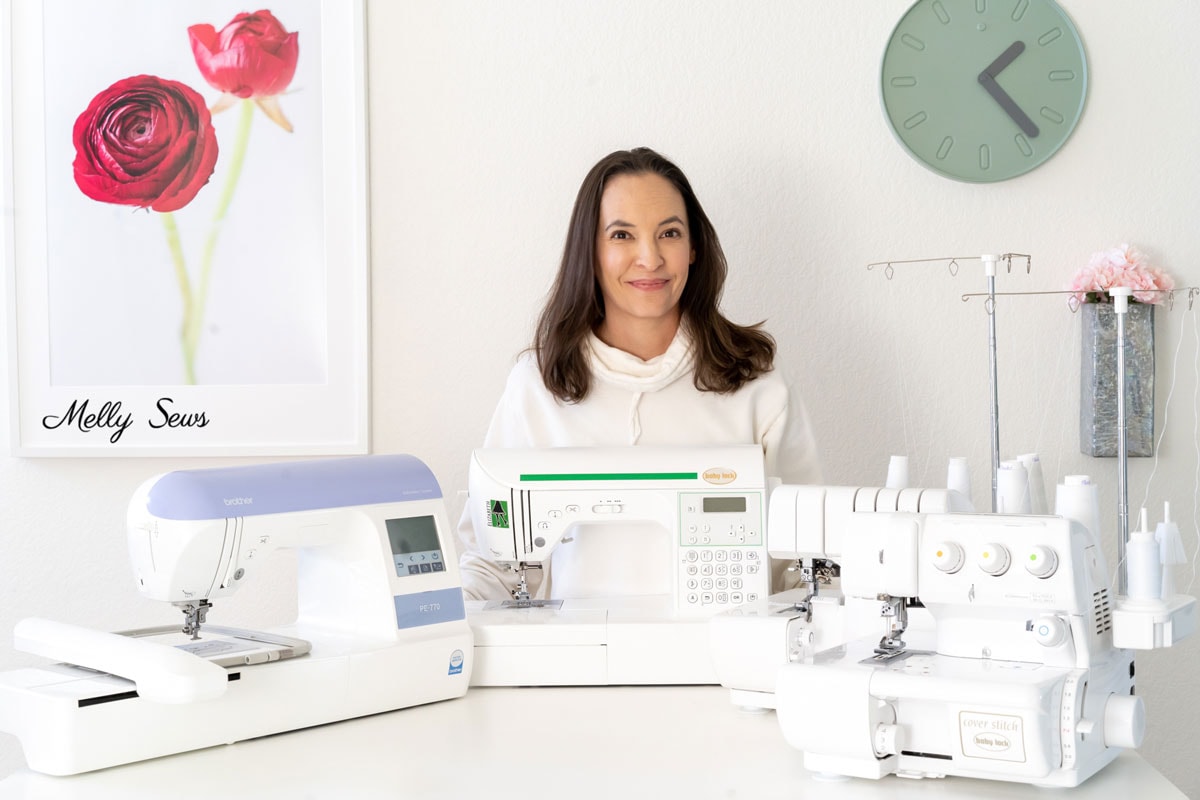
I made a video so that I could demonstrate what each kind of sewing machine does. You can watch it below or on YouTube here if it won’t load below.
Below are some pictures of each sewing machine type and examples of stitches that each machine can do.
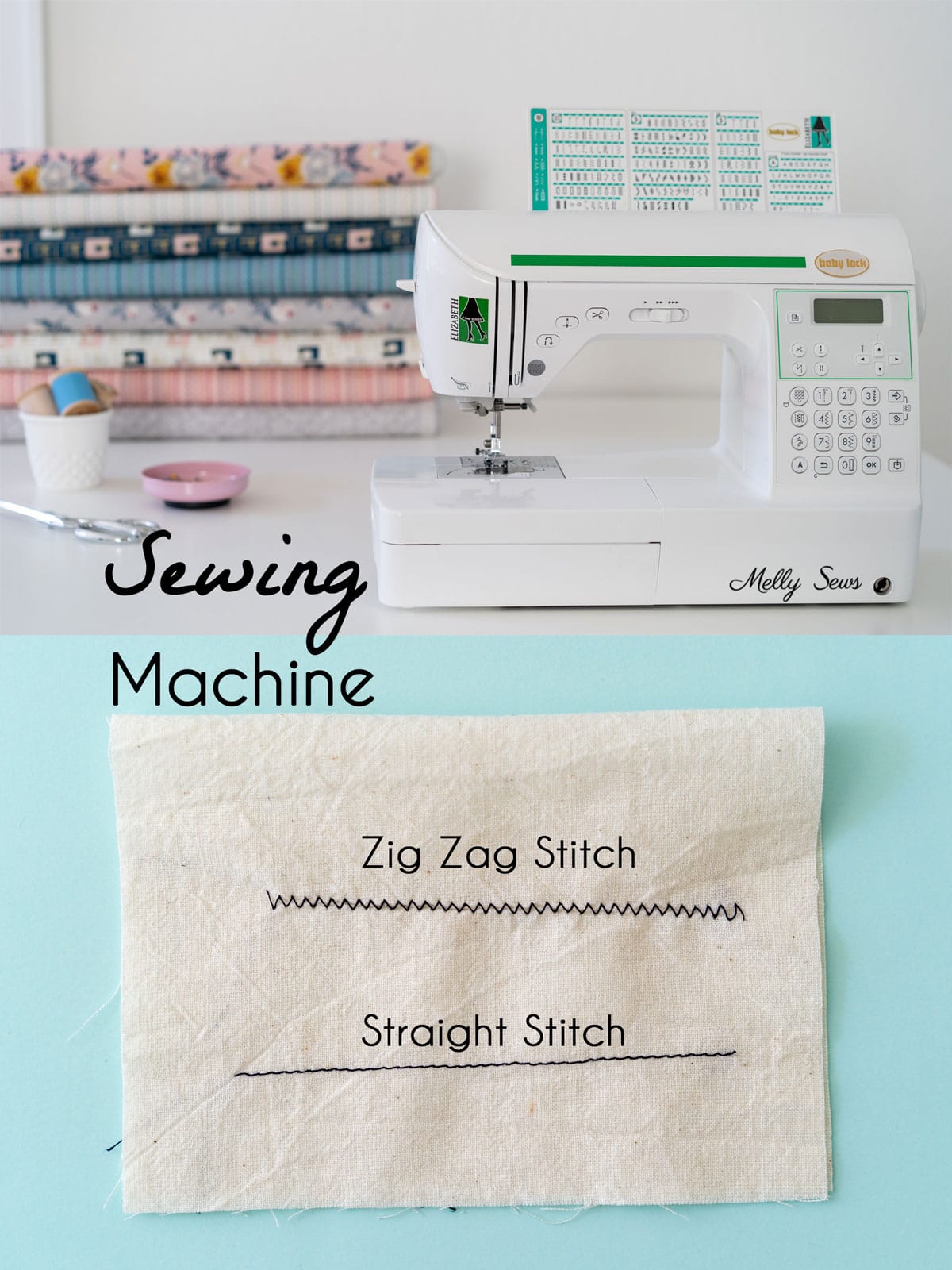
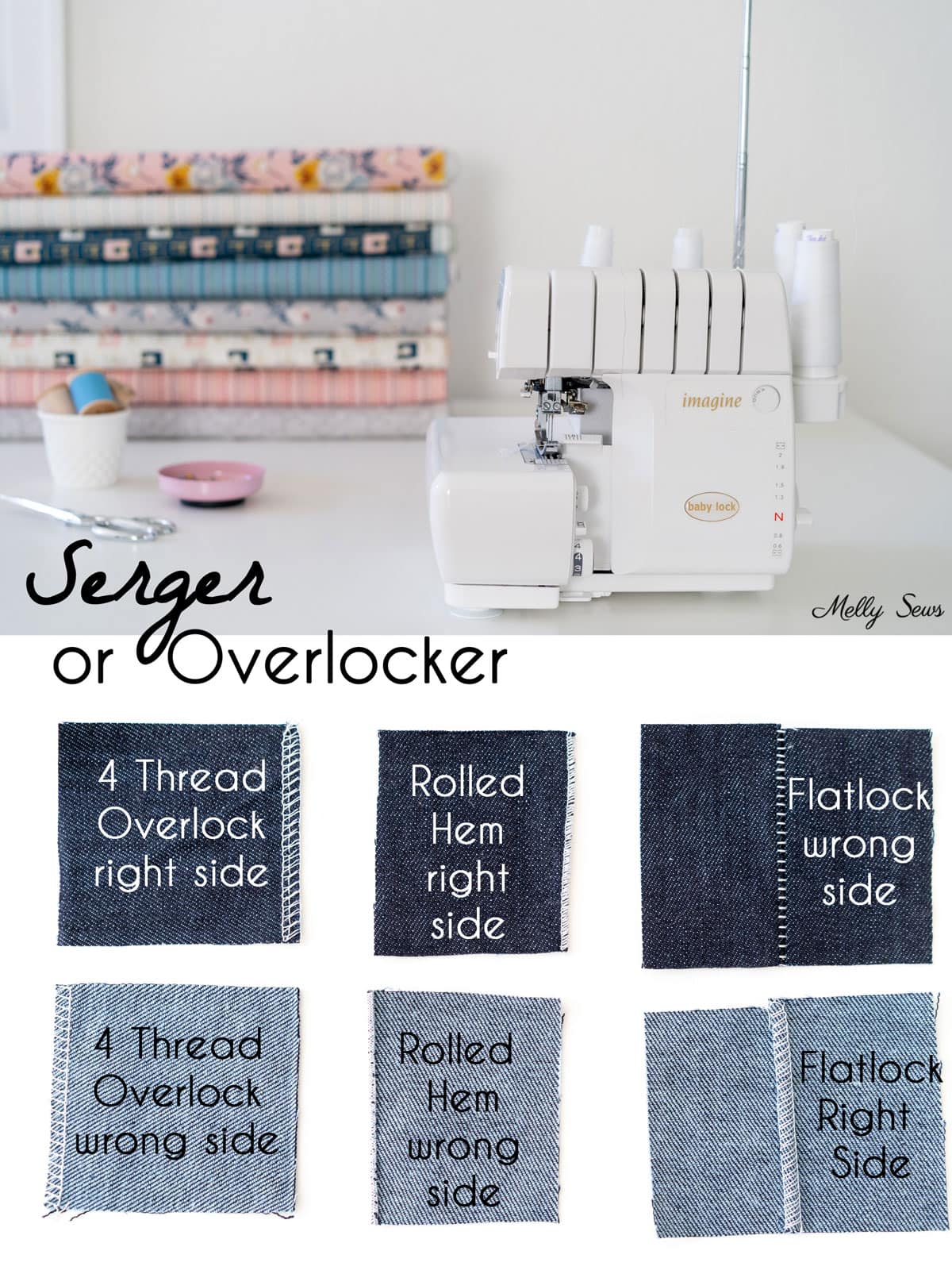
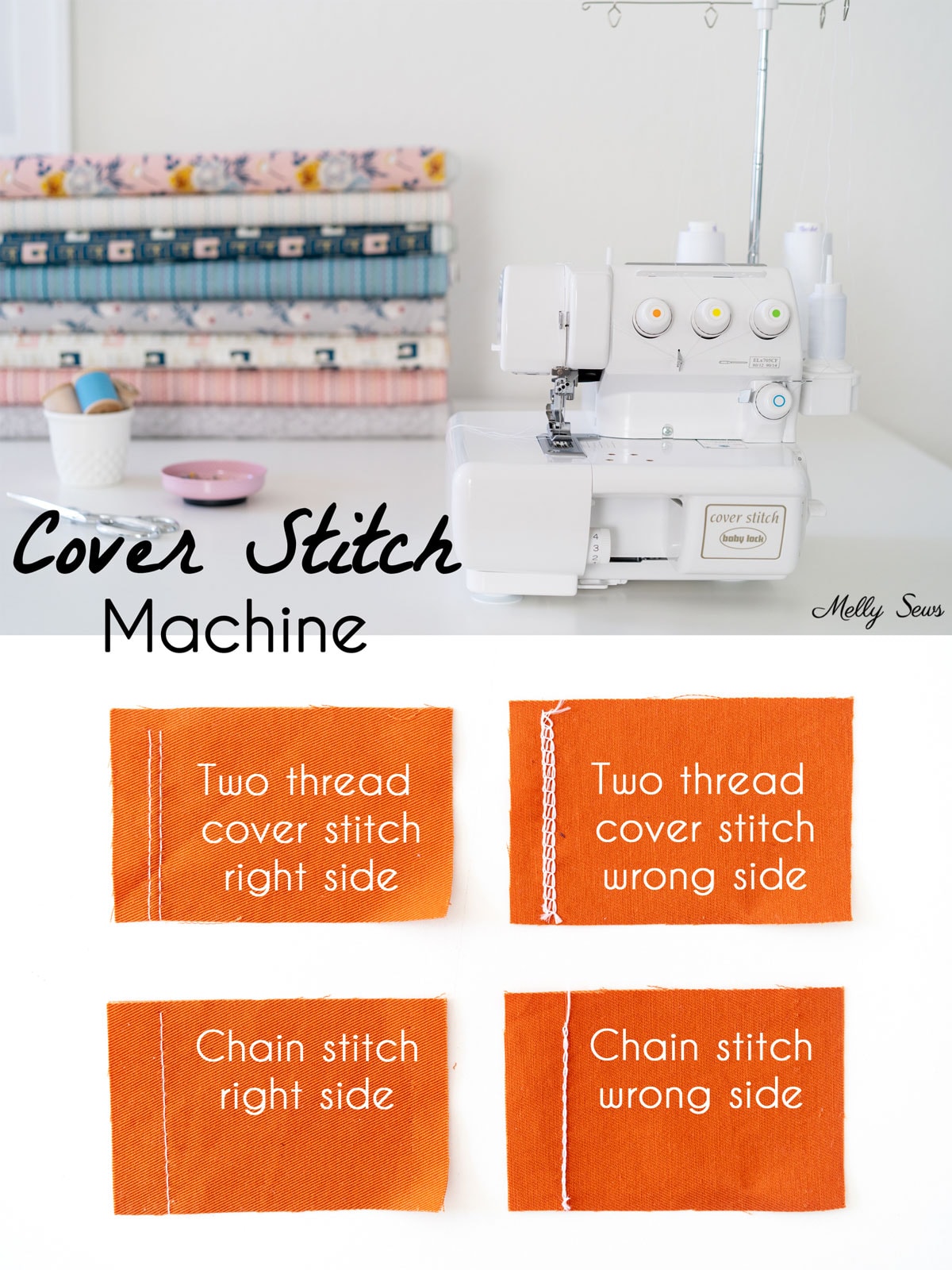
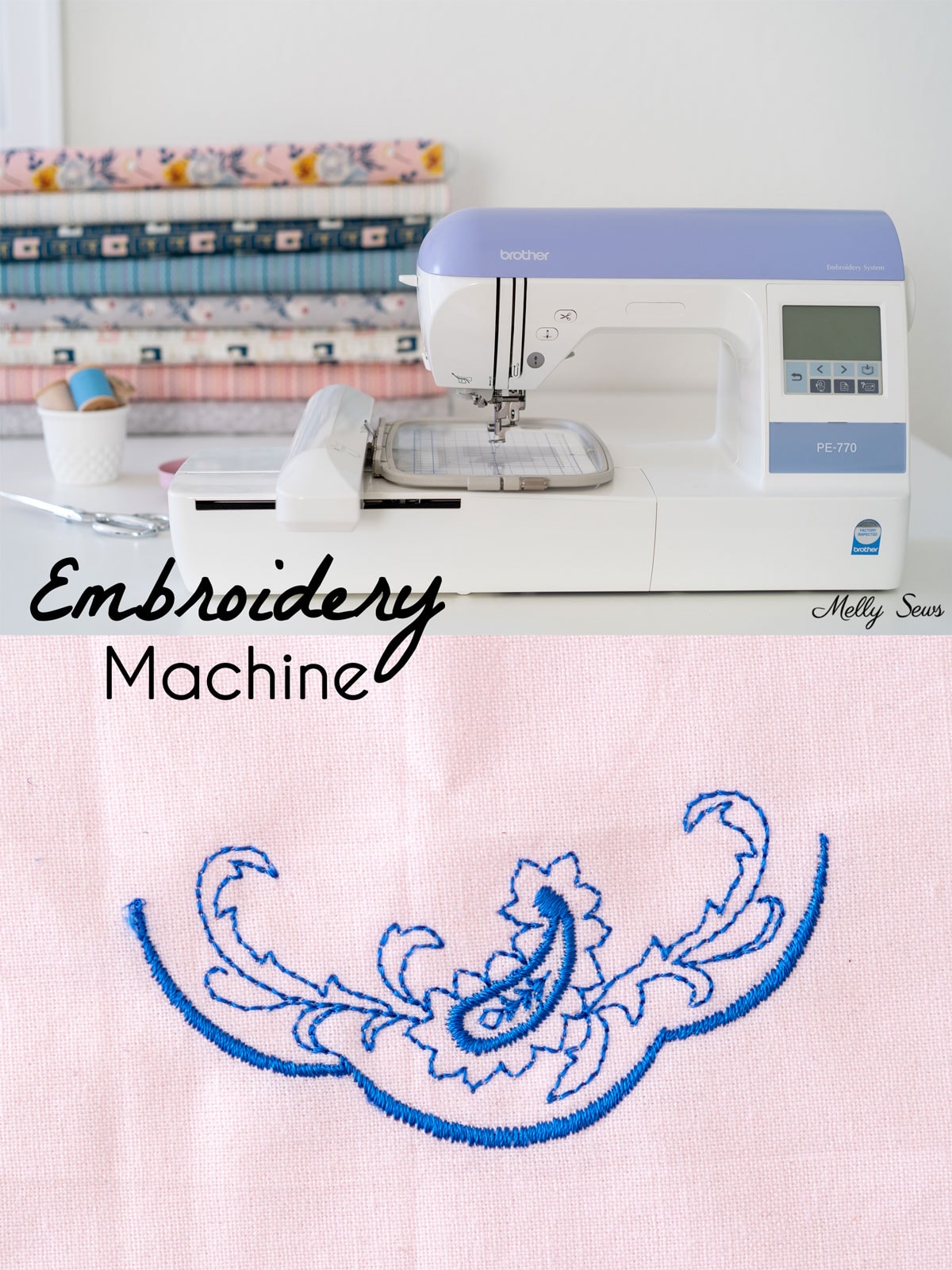
So, what is the best sewing machine to buy? Well, as I said in the video, it depends on what you want to sew. The only one of these sewing machines you NEED to have is the regular sewing machine. The serger, cover stitch, and embroidery machines are all optional.
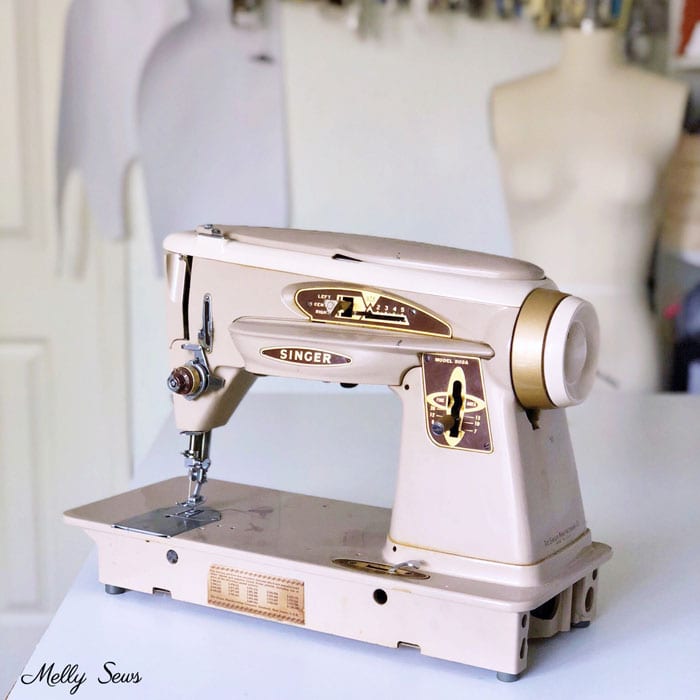
The Best Sewing Machines
There are a lot of good sewing machines out there. The best one for you depends on your budget and what you want to sew. Here is a list of machines I have personally sewn on and liked, but this list is by no means exhaustive.
This post contains affiliate links. As an Amazon Associate I earn from qualifying purchases. All affiliate links are identified with (affiliate link) after the link or a commissions earned statement above the link(s).
- Singer 503b This is a vintage machine from the 1960s that is the one I learned to sew on. You can still find working vintage models, but make sure you can sew on it before purchasing.
- Brother XM2071 (affiliate link) This is an extremely inexpensive machine I used to buy for my theatre classes when I had no budget. It works, but it does not have a one step buttonhole which is pretty frustrating if you want to sew clothing. I used to take my 503 up to school for costumes that needed buttonholes. Also, when it breaks, it is more expensive to fix than buying a new machine.
- Brother CS600i (affiliate link) There’s a reason so many people have this machine. It is affordable (though twice the price of the model above) it has multiple one step buttonholes, and is a pretty good all around machine for beginners.
- Baby Lock Elizabeth This is my current machine, however this model has been discontinued so you can’t buy it new any longer. It has a been a workhorse for me, and I particularly like having a knee bar, which is not a feature that any of these other machines have.
- Baby Lock Aria. This is an expensive machine, though not the most expensive that Baby Lock sells, and you can only buy it at a dealer’s shop, not online. It is a combination sewing/embroidery machine, so you do get a lot of features.
- Brother 1034d (affiliate link) This is a good, basic, workhouse serger, though it can be finicky to thread (make sure you go in the right order) and the tension can also be touchy. But it’s very affordable for a serger
- Baby Lock Imagine This is my current serger and has air threading for the loopers and automatic tension, which are both luxury features that I love. It is much easier to use than the Brother (threading order doesn’t matter, for example, and converting to a rolled hem stitch is easier) but it is also much more expensive and you can only buy it at a dealer’s shop, not online.
Updated to add: I believe the Imagine has been discontinued and the Victory seems to be the equivalent model. - Brother PE 770 (affiliate link) This is the embroidery machine I have and demonstrated in the video. I bought mine years ago, so this one has been updated; at the time of this writing the current model is the Brother PE 800 (affiliate link). I have not used this machine in a heavy duty manner, but I have had it for almost 10 years without any major issue. I only have the 5 x 7″ hoop, but you can purchase and use a smaller hoop.
- Baby Lock Cover Stitch This is the cover stitch I have. It is very similar to the Imagine, with air threading for the looper, but it does not have automatic tension.
- Baby Lock Triumph This is Baby Lock’s top of the line combination serger/cover stitch machine. It has automatic tension and does do a nicer cover stitch than the machine I have. It is also top dollar, and ultimately I decided I preferred the two smaller machines to having to convert this one large one. You can only buy it at a dealer’s shop, not online.
Some Sewing Machines I Won’t Buy:
Just because a machine isn’t on the list above doesn’t mean I hate it. It likely just means I haven’t sewn on it long enough to have an opinion. But below I’m sharing some machines I actually do hate and don’t recommend (mostly vintage models). Please know that it you have one of these machines and it works well for you, I think that’s great! I wish I had better experiences with them personally but I have not.
I don’t buy Singer machines manufactured between the 1970s-early 2000s. There was a run of machines that worked well at the time, but their plastic gears wear out. I’ve been given some of these models for free (particularly Touch ‘n Sew models from the 1970s/80s) and decided they weren’t worth repairing. Later, in the 1990s/early 2000s the Singer machines I used just weren’t even good quality for the time period. The more recent Singer models seem comparable to the Brother models and I know there are some fans, so I wouldn’t rule them out.
I also will not buy White machines from the early 2000s and I probably wouldn’t buy one now because the one I got in 2002 was such a horrible and finicky machine that I think it turned some of my students off of sewing forever.
I will not buy the hand held, mini or toy sewing machines. Every one I’ve seen has been difficult or impossible to use or broke very quickly. Honestly, if it’s a new machine that is less than about $100.00, it’s probably not a good machine. At the $100.00 price point you can get an OK basic machine for straight stitch and zig-zag. If your budget is less than that I’d suggest shopping for a used machine instead of a new one (with my vintage caveats above).
I am not recommending sewing machines from new brands I’ve never heard of, meaning if it is new and it is not Baby Lock, Bernina, Brother, Elna, Husqvarna-Viking, Janome, Juki, Pfaff or Singer I’m not paying for it. With the advent of Amazon and other online shopping sites, there are dozens of imported machines. I’m skeptical of all of them until proven otherwise.
Finally, technology grew by leaps and bounds this century, so I don’t like sergers or cover stitch machines older than the year 2000, and I don’t like embroidery machines much more than 10 years old. If an embroidery machine doesn’t have a USB port, it is a no-go for me. Without that it’s very hard to get any designs from your computer to your machine, and there are soooooooo many digital embroidery designs you can purchase and download now.

Abbey
Thanks for this review, Melissa. I’ve always wondered why the new Babylock machines aren’t generally available online. But I love to see them when you all show them off and they’re certainly not available in Barbados at any retailer. We only get Singer or Brother machines in stores and the garment factories use mostly Juki or Janome machines. I haven’t found anyone yet here with a non-industrial Juki/ Janome or Pfaff, Babylock, Bernina, or Husqvarna Viking. And while it’s so nice to see all the sewists using this pretty awesome features, it would be amazing to see these beautiful machines in person.
Laura Bedwell
I would like to have an embroidery machine someday. . . .
But I wanted to put in a word for Janome machines. I bought one about 30 years ago, and it’s still going strong.
Ariane
Very interesting remark about that USB port !
I have a serger (Singer 14sh644), to sew knits. OK with ONE big regret , it does not have differential feed, which is something to look for when acquiring a serger. Wish someone had told me about that.
About other brands:
My first machine was an Elna Grasshopper passed down from an aunt (who hated sewing – never used it), and which i used mainly to hem jeans.
Then i bought a Toyota “Jeans” (RS 2000) because i just wanted something new (the Elna still works fine). I was a student, it was relatively cheap (sold in supermarkets) , but the name “felt” reliable (i was driving a Toyota Yaris), that’s how i chose it over a Singer.
Well i’ve been using it for… 20 years now (oh how time flies), and it works just fine.
Sometimes i think i could buy a fancy new one that does embroidery etc… but feel it would be like betraying a faithful friend.
Margaret Crawford
Very well done! I had some friends that purchased the cover stitch/serger combo and found it really difficult to manage. One lady took hers back and traded it in for 2 separate machines and is very happy.
Bonnie Snyder
So happy to see that you have a Singer 503. I have my mother’s 503 and don’t want to give it up. I sew beautiful quilts with it. I’ve been told to get a new machine but this one works great with little maintenance.
Michelle
After doing a lot of research, I recently bought a Brother CS600i for my 3rd grader as her first machine. We’re really liking it so far, as an all-around good “beginner” machine. It’s very user-friendly and has some nice bells and whistles that normally come with higher price points. (I’m a Pfaff person myself, and while I love my Pfaff Ambition to death, the Brother is definitely more user-friendly for a beginner.)
Elizabeth A Schumann
Great tip! Thank you. My eight year old granddaughter is fascinated with sewing. I’ll bear this in mind. I started sewing very young on my mother’s old black Singer which had a handle on the wheel but she did get an electric motor that was strapped onto the arm of the machine and drove the wheel which made sewing a lot easier.
Deborah
I have a Singer regular machine with multi-stitches. And I love it. I also have a Brother SE-400 embroider, quilting, sewing machine that I use all the time. It’s the one that is always set up. I’ll be making an embroidered “Baby’s 1st Christmas” Ornament this coming week. I have embroidered towels with the last name initial. Are numerous coasters, and I don’t know what all else. I have made several small quilts on it. I love my Brother machine. It only has the 4 X 4 hoop. I’d love to have one that’ll do the 5 X7 hoops as well.
M. L. Cannon
Have a 503b and love it- was my mother’s and learned to sew on it also,when the others act up- 503b to the rescue .
Donna Ballotta
I have my grandmothers singer but needs to be serviced
I have been using my Bernina 930 for over 30 years and it works great
would I like a new one with some bells and whistles certainly as I get lol much older threader and cutter would be helpful but I am learning quilting and the old baby still works fine If they want to sell a new one they have to lower their prices lol for this widow on a fixed income
but thanks for all t he information
u
Cheryl
Thank you so much for this presentation. I learned quite a bit about the different manufacturers and what some of the machines can or cannot do. As per usual, the information you give is invaluable to me. Thank you for all your hard work and sharing your talents, ideas, advice,
Sincerely, Cheryl Masters
Seabrooke Leckie
Arrived here from your most recent newsletter. Interesting to see your recommendations, and which brands you use most.
I have an Elna 2002, which my grandmother gave me for my 16th birthday. 25 years later (oh how time flies!) it’s still going strong, and has only been serviced once in all that time, about 15 years ago. It’s fairly simple features-wise but does buttonholes and some fancy stitches; I’ve never needed anything else. If it ever bites the dust I’ll feel like I’ve lost a dear old friend.
MaryBeth
I have heard that the inexpensive brand name machines sold at craft stores have plastic instead of metal gears I think the beat machine is one which you can get good service and education from the dealer. If you can get your pre-buying questions answered in a way you like, keep shopping!
Thanks for all the great information !
Dorothy
I have a Brother XR9550PRW. It has been used to make baby things, home decor, totes & backpacks, aprons, etc., and most recently quilts. As I get into quilting more, I wonder if I should buy one of the more expensive embroidery/sewing machines, especially those with magnetic frames to complete the quilting? I’ve completed all my quilts (did not hire out to longarm) nut have done only simple finishes. I’d like to learn to freeform quilt.
But then I think back to the generations of women before us that quilted with just a simple machine and wonder do I really need a machine with all those bells and whistles? I am interested in what more experienced quilters would advise.
Also–thank you for all you provide!
Karen
Dorothy,
If you want to do free motion quilting you just need to be able to drop or cover the feeddogs, so you move the quilt. I quilt all my quilts and do most of them on my embroidery machine. The more room you have to the right the easier it is to deal with the quilt,
Hilary
I bought a Singer quantum’s stylist about 8 years ago. It has been a fabulous machine, but you were so right about plastic. The thread guides have worn a great big gouge and I had to thread it without going through it. It will need a whole new body which I’m not prepared to do. I bought an ordinary straight stitch almost all metal and what a difference. Plastic is out for me.
Wendy mathews
The best way to purchase a sewing machine is to visit your local dealer. They can help to match you to the machine that best meets your needs. They will teach you how to use the features on the machine and support you after the sale. There is no substitute for for this type of support. If you live in an area where that has a Machi e dealership please go and support your local dealer. They have access to the highest quality machines that are not available to online sales.
Dianne Underwood
HI Melissa – thanks for a good review of machines. I just wanted you to know that I have a Singer 860 (purchased in 1981). It has been a very good electronic machine as it has a selection of 5 stretch stitches, 5 decorative stitches (including blind hem) and a 2 step buttonhole. I have kept it clean and lightly oiled – the only professional maintenance happened last year when I had to replace the feed gears (pretty good for 40 years of work). So now at my age (over 70) it will definitely outlast me! If I were going to purchase a new one, the added features I would most desire are adjustable speed control (a great feature to ensure a steady pace for finicky work) and built-in walking foot feature to keep your fabric layers moving evenly for a professional result the first time, especially for stretchy or slippery fabrics!. (Yes I do have a walking foot attachment for mine which I certainly wish I had gotten much sooner than I did). And you are right – selecting a machine is hard because in most cases it is a one-time purchase. Your article will surely be helpful to those thinking about getting one for Christmas!
Joan dickens
I have a 503b since 1962. Makes great buttonholes. My workhorse is a Bernina from 1987. But I also agree about the Imagine except I had problems with the air threader and the dealer wouldn’t help.
Deb in Idaho
I agree with you Mel I won’t have anything to do with Singer from 1970 to 2021: I have several vintage Singers , a 401a, a 99k. I sew on a Janome and have a Janome serger. Both are great machines. I am teaching my daughter to sew and she had a Singer but it was terrible so I bought her a Janome which she loves. Love your blog
Janaki Srinath
Wow! What a huge amount of work you have put into this article…and so much useful information for whikch I am truly thankful. Here in India there isn’t a wide range of brands to choose from. Singer is one of the oldest and Usha machines, which are a joint venture with Janome. I have one of each and stopped using the Singer after the zig-zag function didn’t work anymore. Singer has hopeless after-sales service and expensive to boot once you are out of warranty period. Brother, Juki and less commonly Bernina are the others available. Both mine have only a step buttonhole feature, finicky to uuse and not too neat in the result.
I now plan to go in for a Brother model with a one-step buttonholer. There are two or three models in an affordable range.
Elizabeth A Schumann
I have a Bernina 707 from 1972 and it is my reliable workhorse. I also have an Elna Lotus, more delicate, from 1978 and that’s it but l don’t do quilting or embroidery or other fancy stuff.
brendalynne1
thanks for another informative article.
The only machine U would be interested in is an embroidery machine BUT at my age it is just a dream. Thanks
Colleen Hartlen
Great information. I always have some project on the go so my machines are in constant use. I have always sewn for my family and household, including clothes for my husband. I use an Elna Pro 90DCX serger , which is now 30 years old and and a Janome Memory Craft 9700 sewing machine which is 20 years old. both are running well. I do regular cleaning, depending on use and have professional maintenance every couple of years..